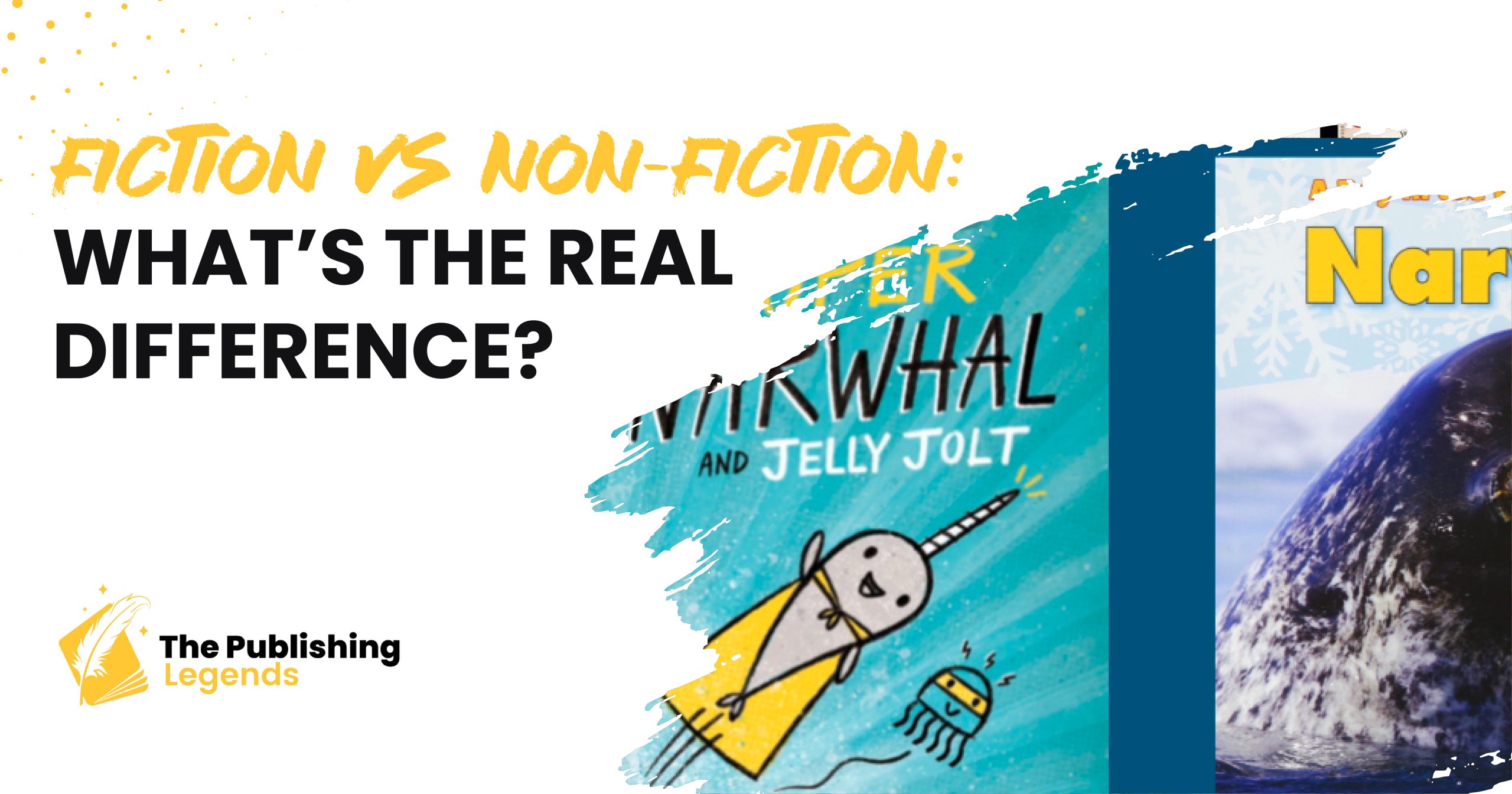The book world is a language on its own, and there are so many terms you may be introduced to. However, the following two are the most critical ones that you will ever need to know, namely fiction and non-fiction. Imagine that they are two huge buckets. All books written ever will fit in one or the other category. There are lots of smaller genres in each of those buckets: mystery, romance, self-help or biography.
At first glance, the distinction between fiction and non-fiction might be pretty obvious. One is fictional and the other is real, correct? Sure, on the one hand, but not on the other. That does not always happen easily. Some books intertwine reality with imagination, and there are some books that present a real story in a manner that makes it seem as though fiction is involved. This is why it is essential to know the distinction as well as in which cases they coincide.
So, the world of non-fiction and fiction is great, so we are going to understand how to distinguish them, how they are similar, and which of them can suit you.
What Is Fiction?
Fiction is any writing that the author creates through their imagination. It is not supposed to depict real life as it was, although some details can be based on real things or individuals, such as places or feelings. In fiction, the author writes characters that are imaginary, the plot that is fictional, and the setting is fictional, and usually, the purpose of fiction is to entertain a reader, touch them, or make a reader think.
Common Examples of Fiction:
- Novels – Long stories with detailed plots and character development (e.g., Harry Potter, The Great Gatsby)
- Short stories – Brief fictional narratives, often focusing on a single event or character
- Genres like:
- Fantasy (e.g., The Hobbit)
- Science fiction (e.g., Dune)
- Romance (e.g., Pride and Prejudice)
- Mystery/Thriller (e.g., Gone Girl)
Why Is Fiction Special?
Fiction is literally the image of the world from the perspective of a different individual, a truth-seeker in the course of a crime, a child wallowing in a fairy land, or a space hero on a strange planet. To our imagination, to our emotions, it makes an appeal!. Fictional stories may make you laugh, cry, or even to get inspiration as they shape the universal human experiences creatively.
It’s also structured to engage. Most fiction follows a classic storytelling arc:
- Beginning (introduction to characters and setting)
- Middle (rising conflict and challenges)
- End (resolution or conclusion)
Through this structure, fiction delivers emotional journeys and thought-provoking themes that stay with readers long after the last page.
Want to bring your fictional world to life? Partner with us for expert book formatting services that give your novel a polished, professional touch.
What Is Non-Fiction?
The non-fiction literature is based on truth and reality. It looks at genuine personalities, phenomena, facts, and knowledge. The non-fiction is usually aimed at informing, educating, portraying, or describing the real world. In non-fiction, the authors carry out research and bring facts or even their own experiences so that the readers learn something about a topic.
Common Examples of Non-Fiction:
- Biographies & Memoirs – True life stories of individuals (e.g., Becoming by Michelle Obama)
- History books – Factual accounts of past events, wars, movements, and civilizations
- Self-help & How-To Guides – Books that teach you how to improve a skill or part of your life (e.g., Atomic Habits)
- News and Journalism – Articles based on current events, interviews, and investigations
- Textbooks – Educational material used in schools and universities
Why Is Non-Fiction Valuable?
Non-fiction imparts lessons of the real world- How the human body operates and what was actually done during World War II. It provides us with the means to make our decisions, as well as personal and professional development, and our culture and history. It is also more sentimental to share with a reader a story that happened in real life and the reader can now identify with each other as human beings with real stories of triumph, growth or even struggles.
The methods of storytelling can still be applied to works of non-fiction, as a matter of fact, it is possible that story after story is more effective in representing the events and facts depicted in the non-fiction work. The non-fiction is something the readers think to be accurate and, therefore, it is important that this type should have integrity and clarified explanation..
Ready to share your real-life story or expertise? Discover our non-fiction ghostwriting services to turn your knowledge into a compelling, high-quality book.
What Makes Non-Fiction Valuable?
Non-fiction makes us learn. It educates us on the world, science, health, and people, amongst others. It provides us with facts that are dependable and helps us understand real-life problems. It may still be emotional or inspirational, just as when one narrates the life of a person or discusses their plight. Most non-fiction books are written in a somewhat conversational or storytelling tone to entertain the readers, but all that is written is based on truth.
Key Differences Between Fiction and Non-Fiction
Let’s break it down into a simple comparison:
| Feature | Fiction | Non-Fiction |
| Based on real events? | No (imaginary) | Yes (factual) |
| Purpose | To entertain or inspire | To inform, explain, or educate |
| Characters | Made-up or inspired by real people | Real people, often named |
| Plot | Created by the author | Follows real-life events |
| Writing style | Creative, narrative | Informative, factual (sometimes narrative) |
One big difference is that fiction doesn’t claim to be true. Authors create the world, the rules, and the story. Non-fiction, on the other hand, promises accuracy. It’s expected to reflect real life as closely as possible.
Where the Lines Get Blurry
This is where it gets interesting. Not all books are confined to a single category. There are moments when authors mix truth and fiction to narrate a story.
Some of the Mixed Genres:
- Historical fiction: These narratives are set in the past but feature fictionalized characters or dialogue.
- Creative non-fiction: Relates the actual story in a literary manner (such as in Memoirs).
- Docudramas or biographies: True stories with a little bit of lime thrown in.
Books based on true stories may be altered to enhance their emotional appeal. Others may even tell a true story, but present it in a manner that makes it seem like fiction. This is why understanding what the author is doing will guide you in how to read the book.
How to Tell the Difference
If you’re holding a book and wondering if it’s fiction or non-fiction, here are some simple questions to ask:
- Did these events really happen?
- Are the characters humans?
- Should I learn anything from the book or have fun?
- Does it give references, facts, or does it have research?
- Does it belong to him or her, or is someone just imagining?
Usually, a quick glance at the back cover or introduction will provide the answer.
Which One Should You Read?
There’s no right or wrong answer. It depends on what you’re looking for.
Choose Fiction If:
- You want to escape reality for a while
- You enjoy exciting plots or emotional journeys
- You’re looking for creative inspiration
- You like characters who grow and change
Fiction helps you explore emotions, ask big questions, and experience new worlds.
Choose Non-Fiction If:
- You want to learn something new
- You’re curious about real people or events
- You enjoy facts, history, or practical tips
- You’re interested in self-improvement
Non-fiction helps you grow your knowledge and make informed choices.
Many people enjoy both. You can read a biography one day and a fantasy novel the next. There’s something valuable in each.
Why This Matters (Especially for Writers)
In case you are interested in writing a book, you should know the first step is first to learn the distinction between fiction and non-fiction. Very different expectations apply to these two categories as far as structure is concerned. A fiction book uses a plot which normally comes in the pattern of a story which is character, conflict then resolution that is designed to keep the reader engulfs in the book. The non-fiction books though can break the knowledge into pedagogic chapters or segments which are separated by topics/ steps/phases/ or themes in an attempt to make learning/understanding easier.
It would also be beneficial to gain insight into the differences regarding the marketing of your product and the administrative access to your target market. People who read non-fiction tend to either get the information or make a discovery, find meaning, or embark on an intellectual journey. In contrast, those who read fiction pursue entertainment, fantasy, and emotional involvement. It is on this basis that the marketing methods of the book will change significantly; i.e., once you utilize the book clubs, educational sites, or social media, it is highly likely that you will employ the methods differently depending on what you write. It is essential to understand where your book fits, ensuring a smooth process throughout writing, publishing, and other areas.
Final Thoughts: Two Worlds, One Love for Reading
After all is said and done, fiction and non-fiction are two sides of the same coin. Although they may have various intended uses, they have vital roles in our lives. Fictions are fodder for our imaginations and feelings. Non-fiction nourishes our curiosity and minds.
So, as a reader or even as the writer, by observing the distinctions (and also adoring the beauty of each), it can make you love books even more. The next time you will take a book in your hands, you will ask: is it a real story or does a wonderful imagination make it? Anyway, you are in store for a trip worth taking.
Unsure which genre suits your story? Let The Publishing Legends help you choose your path and bring your book to life. Explore our book publishing services today.




